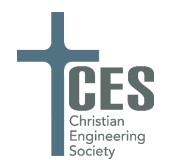Document Type
Paper
Abstract
Engineering programs at Christian colleges typically focus primarily on undergraduate education. Likewise, faculty members drawn to Christian engineering education tend to have a strong desire to disciple young men and women in what it means to be faithful Christ followers in engineering. Consequently, engineering faculty tend to work long and hard to provide a solid education experience, leaving little time for anything else. However, institutional demands on faculty typically extend far past teaching, and one area that inevitably pops up in growing Christian engineering programs is research and scholarship. What is the place of research in a Christian engineering program? Does it have a place at all? And what should Christian engineering research look like? These are big questions, and a simple paper like this one cannot provide an exhaustive answer. However, as a baby step, this paper will examine a Christian lens through which engineering scholarship can be viewed and critiqued. This lens consists of five guiding principles for engineering that were developed based on the Creation-FallRedemption paradigm and presented previously1 . Using these guiding principles, engineering scholarship that was conducted in a typical university research format and published in a traditional engineering journal2 will be carefully examined and critiqued. In doing so, my hope is that a bit of light will be shed on what integrally Christian engineering scholarship looks like, and that this understanding might provide insight on answering other questions in regards to research and scholarship in Christian engineering programs.
Creative Commons License

This work is licensed under a Creative Commons Attribution-Noncommercial-No Derivative Works 4.0 License.
Copyright
© 2017 Justin R. Vander Werff. All rights reserved.
Publication Date
June 2017
Integrally Christian Engineering Scholarship: A Case Study
Engineering programs at Christian colleges typically focus primarily on undergraduate education. Likewise, faculty members drawn to Christian engineering education tend to have a strong desire to disciple young men and women in what it means to be faithful Christ followers in engineering. Consequently, engineering faculty tend to work long and hard to provide a solid education experience, leaving little time for anything else. However, institutional demands on faculty typically extend far past teaching, and one area that inevitably pops up in growing Christian engineering programs is research and scholarship. What is the place of research in a Christian engineering program? Does it have a place at all? And what should Christian engineering research look like? These are big questions, and a simple paper like this one cannot provide an exhaustive answer. However, as a baby step, this paper will examine a Christian lens through which engineering scholarship can be viewed and critiqued. This lens consists of five guiding principles for engineering that were developed based on the Creation-FallRedemption paradigm and presented previously1 . Using these guiding principles, engineering scholarship that was conducted in a typical university research format and published in a traditional engineering journal2 will be carefully examined and critiqued. In doing so, my hope is that a bit of light will be shed on what integrally Christian engineering scholarship looks like, and that this understanding might provide insight on answering other questions in regards to research and scholarship in Christian engineering programs.

